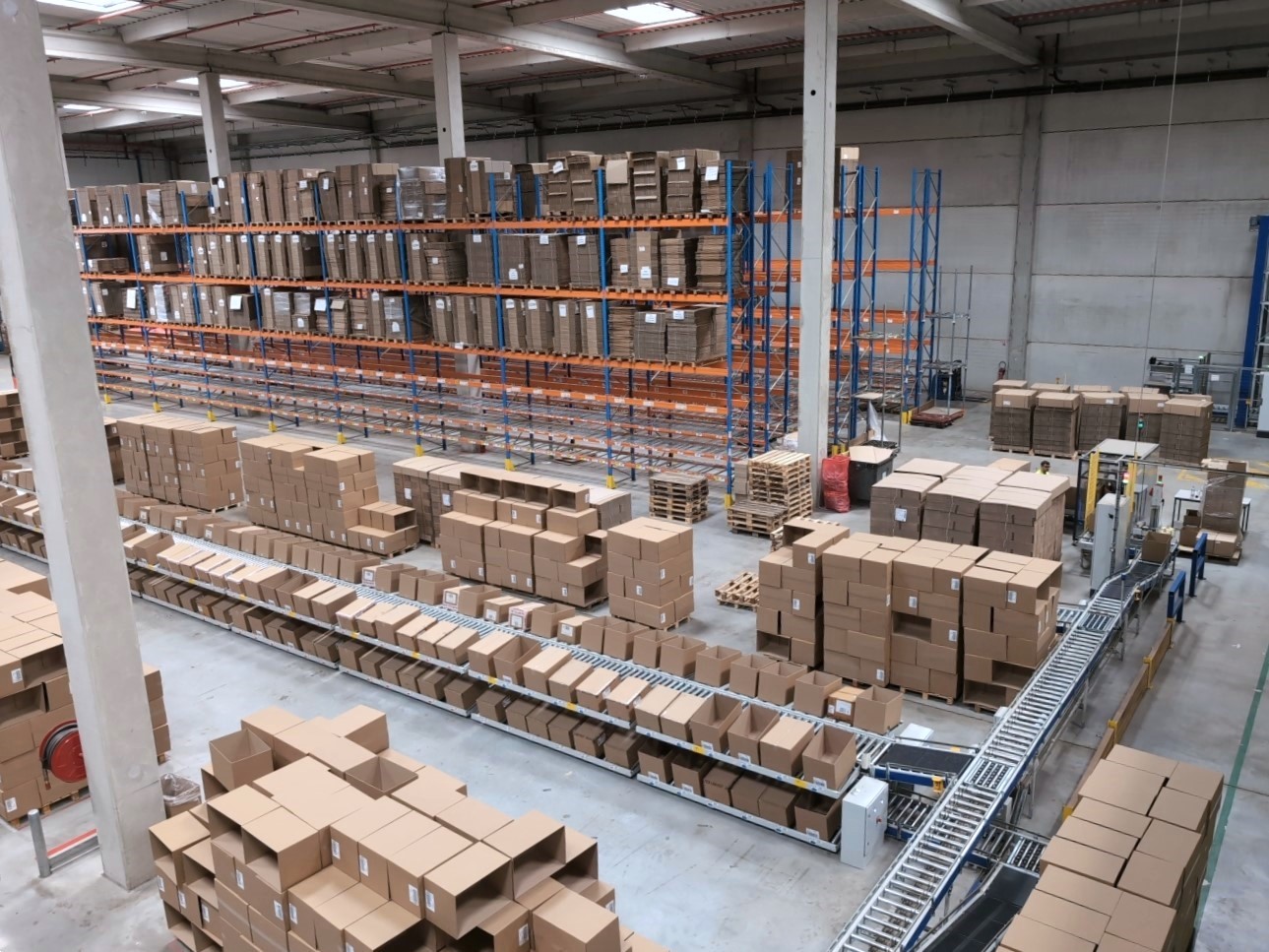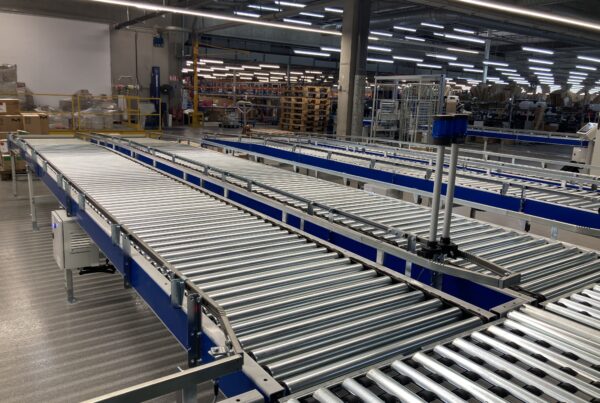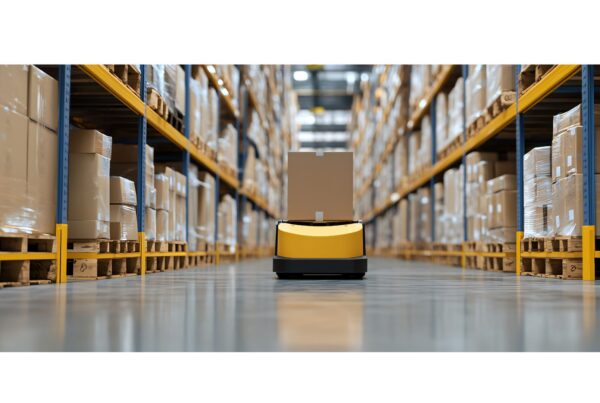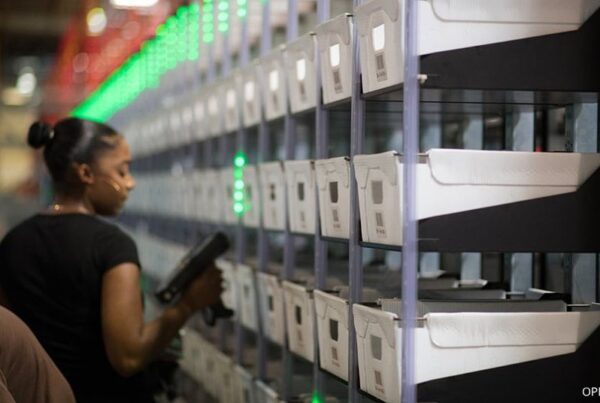Outsourced Logistics: how automation is redefining 3PL performance
Summary of the article
To address the growing complexity of logistics, more and more companies rely on 3PL providers. These experts leverage automated warehouses to enhance performance, flexibility, and cost control. Driven by the rise of e-commerce, the sector still faces major challenges: inflation, labor shortages, increasing customer demands, and rapid technological change. Automation and technologies like AI or WMS have become key drivers in building a more agile and sustainable supply chain.
01. What is a 3PL?

A 3PL, or Third-Party Logistics, is an external company to which a business delegates part or all of its logistics operations. With deep industry expertise, a 3PL can manage the entire supply chain, including complex processes such as inventory management, order picking, shipping, and returns.
They provide specialized infrastructures—automated warehouses, cross-docking platforms, transport fleets—often shared across multiple clients. This allows companies to achieve economies of scale while boosting operational agility.
A growing market fueled by e-commerce
The global 3PL market is booming, driven by digitalization and the explosion of e-commerce. In 2024, it is valued at nearly $1.3 trillion, and is expected to grow by around 8% per year until 2030 (source: Grand View Research). Europe stands out with a dynamic ecosystem led by major players like ID Logistics, Geodis, FM Logistic, and Log’S.
02. Why outsource your logistics to a 3PL provider?
With increasingly demanding supply chains (omnichannel, tight deadlines, high customer expectations), companies have a strong incentive to partner with 3PLs. By delegating time-consuming and technical tasks to experts, they save time, optimize resources, and can focus on their core business: innovating, producing, and growing.
Main benefits include:
Better cost control
Outsourcing logistics turns fixed costs (facilities, equipment, salaries) into variable costs. Companies only pay for what they use, avoiding maintenance expenses and reducing HR management.
Access to the latest technologies
3PLs give clients direct access to cutting-edge technologies like WMS, automation, and AI—without the burden of acquisition and maintenance costs.
Improved agility
A logistics provider can quickly adapt to spikes or drops in activity. This enables clients to maintain high service levels without being constrained by staffing issues.
Expansion into new markets
3PL providers often have extensive logistics networks, giving companies access to new markets and business opportunities without having to invest in additional infrastructure.
03. The main challenges for 3PL providers
Despite market growth, 3PLs face several major challenges to remain competitive:
- Cost pressure: Inflation and low margins force providers to continually optimize operations to maintain profitability without sacrificing service quality.
- Required flexibility: Market volatility demands maximum agility—being able to reorganize teams, resources, and processes without compromising efficiency.
- Labor shortage: The logistics sector suffers from chronic labor shortages, making it hard to maintain consistent and responsive service levels.
- Technological acceleration: Customer expectations for traceability, automation, and predictive tools push 3PLs to invest heavily in digital transformation.
3PLs operate under constant pressure, requiring continuous innovation and anticipation of market trends.
04. Automated warehouses: a competitive advantage for 3PLs
94% of 3PLs consider adopting automated warehouse solutions a top priority (source: Datex). It’s no longer optional : automation is essential to remain efficient, flexible, and responsive.
According to MHI, automation can improve logistics performance by an average of 30% and offers benefits across multiple areas:
01.
Faster execution times
Automated solutions – like sortation machines, AMRs, or goods-to-person systems – speed up flows, reduce travel, and optimize order picking times.
02.
Process standardization
Automation structures operations into clear, consistent, and repeatable processes, ensuring better control and stability.
03.
Error reduction
By minimizing human intervention and automating tasks, the risk of errors and customer disputes is significantly lowered.
04.
Real-time traceability
With tools like WMS and IoT sensors, 3PLs can offer increased visibility into operations and adjust activities in real-time.
05.
Better working conditions
Automation relieves operators from repetitive, strenuous tasks, helping make jobs more attractive and easing labor shortages.
06.
Lower operating costs
Though initial investment is high, automated warehouses generate long-term savings: increased productivity per square meter, fewer returns and errors, optimized staffing, and reduced energy consumption.

Download our guide: Writing specifications for an intralogistics project
05. What are the best automation solutions for 3PLs?
The ideal automation solution depends on many factors: warehouse size, product types, volume, and operational goals.
For 3PLs, often operating in shared environments with multiple clients, the real challenge lies in implementing hybrid systems that can handle a wide variety of SKUs and client requirements.
In this context, the focus should be on flexible, scalable, and intelligent technologies that offer optimal traceability and high adaptability. These include:
Automated Storage and Retrieval Systems (AS/RS)
These systems automate the storage and retrieval of goods, maximizing vertical space and minimizing labor. Companies like Falcon Autotech and Opex offer high-density systems where robots navigate 3D aisles to fetch items and deliver them to picking stations.
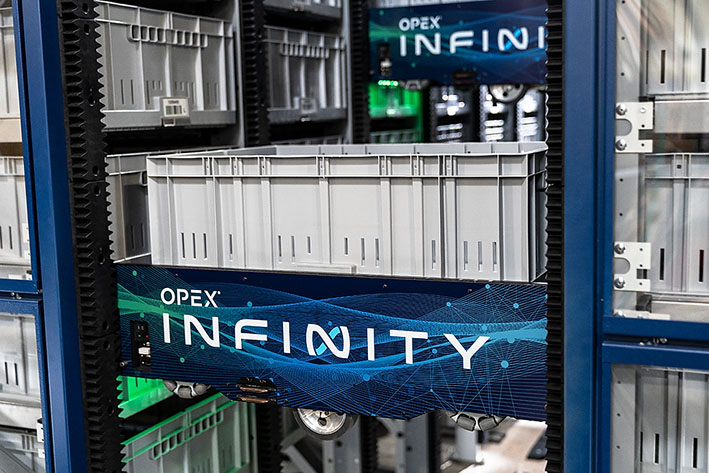

Material Handling Robots
AMRs (Autonomous Mobile Robots) and AGVs (Automated Guided Vehicles) automate internal goods transport while dynamically adapting to flow. End-of-line solutions like palletizing robots and mobile wrapping machines also reduce operator strain.
Automated Sortation Systems
These enable fast, accurate sorting of high-volume items to order prep or shipping areas. Popular systems include Tilt-Tray, Cross-Belt, and Pocket Sorters — boosting both speed and reliability.

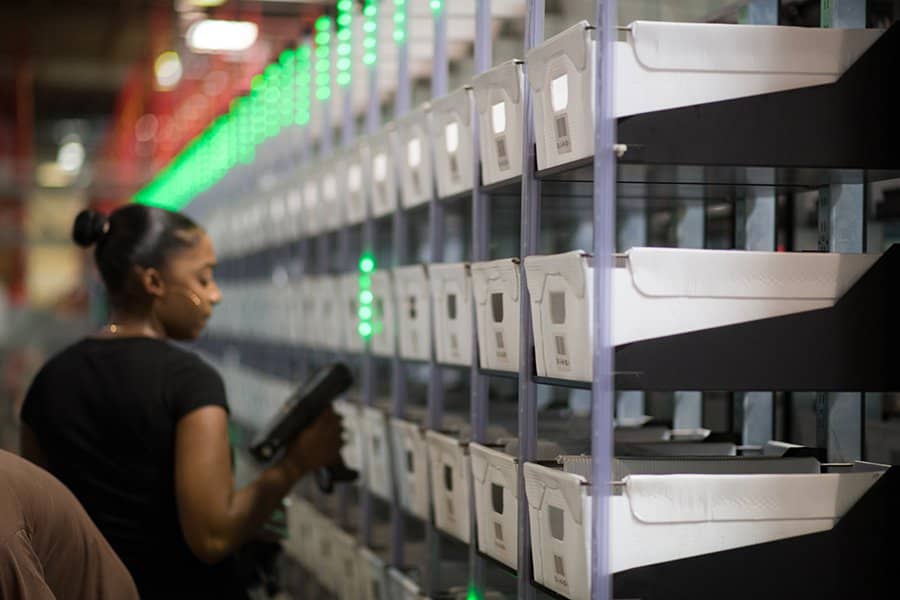
Goods-to-Person Picking Systems
Picking can be enhanced using Pick-to-Light or Put-to-Light systems, guiding operators with visual signals. Advanced systems use robotic arms for autonomous picking — even in complex environments.
Warehouse Management Software
The WMS coordinates operations: inventory, scheduling, space optimization. Meanwhile, the WCS (Warehouse Control System) manages automation in real time. Together, they form the brain of the smart warehouse.
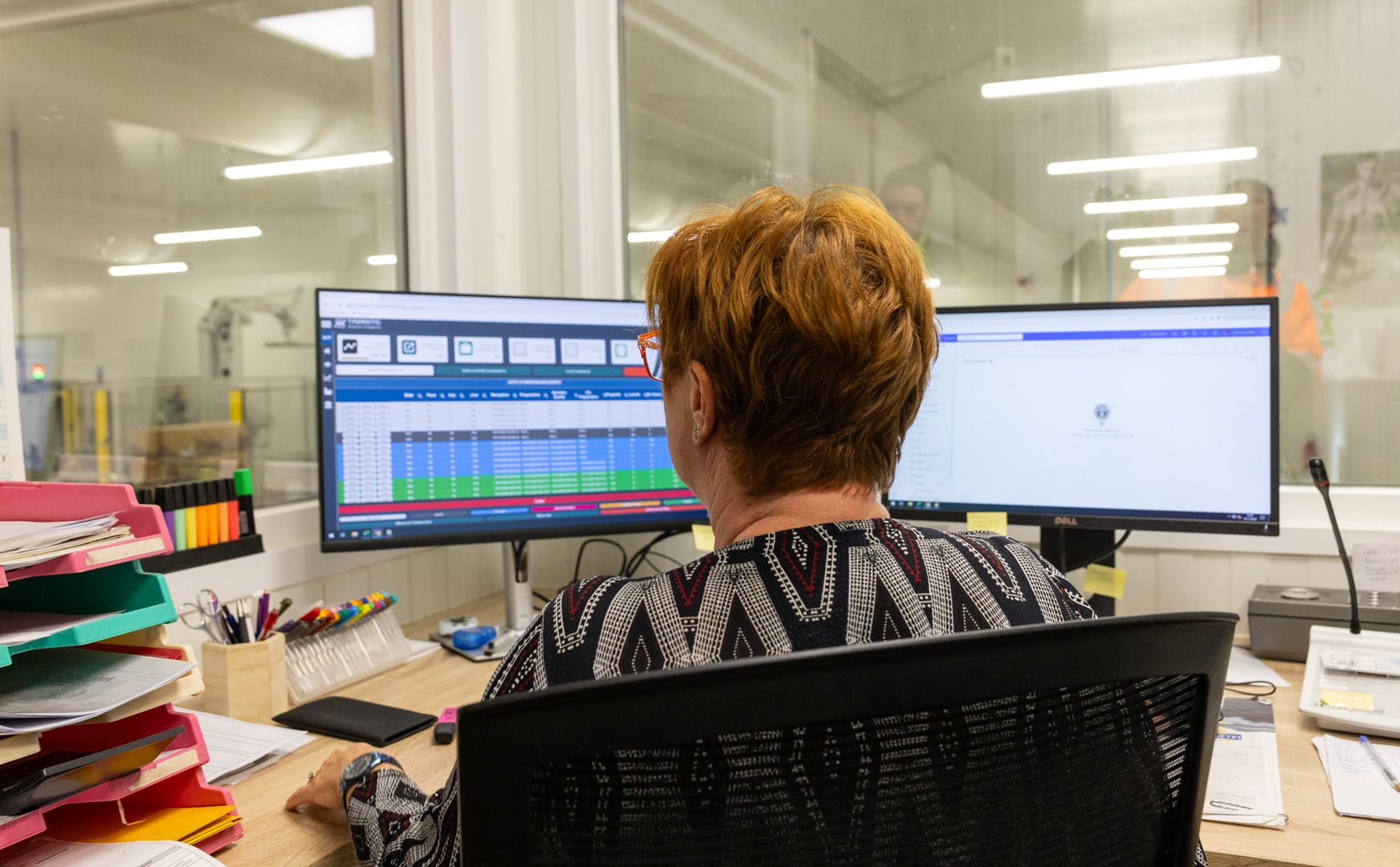

Artificial Intelligence & Big Data
AI and Big Data offer real-time and predictive visibility, optimizing flows and preventing anomalies. Tools like digital twins simulate warehouse operations, test decisions, and improve operational reliability. These technologies boost agility, responsiveness, and performance.
Implementing these systems is a challenge, especially maintaining service continuity during installation and testing. Intralogistics integrators like Transitic are experienced in deploying systems with minimal disruption—working during weekends or off-hours, for example.
Some providers opt for retrofitting to upgrade existing systems without heavy investment. This more affordable path—chosen by companies like Geodis—has yielded up to 70% savings compared to new installations (see full case study).
The future of 3PL: Between innovation and agility
Over 60% of 3PLs say digital transformation has improved client retention and appeal (source: Gitnux). But beyond competitive advantage, automation is reshaping the industry—enabling a more resilient and predictive supply chain.
Instead of reacting to market volatility, 3PLs will be able to anticipate and absorb it with minimal impact. Thanks to AI, digital twins, and predictive analytics, they can dynamically adjust resources, prevent stockouts, reduce quality costs, and ensure delivery promises.
This ability to combine speed, visibility, and sustainable performance will define tomorrow’s leaders. The most innovative 3PLs will play a central role in shaping the value chains of the future.
About the author – Cloé Moreel
Cloé Moreel has been a communications officer at Transitic since 2020. She regularly writes articles on intralogistics, supply chain, and emerging connected technologies.
Subscribe to our newsletter
A concentrated dose of intralogistics! Discover our latest business cases, videos, and news.
Related Articles
#connectedintralogistics
France
96 Bd du Petit Quinquin
CRT 1 – 59812 Lesquin
Tél. : +33 (0)3 20 87 66 96
Germany
Am Scheid 1
57290 Neunkirchen
Tel : +49 2735 6588580
Spain
C/ Velazquez, N. 80 – 5 IZ
28001 Madrid
Tel : +34 673 234 296

